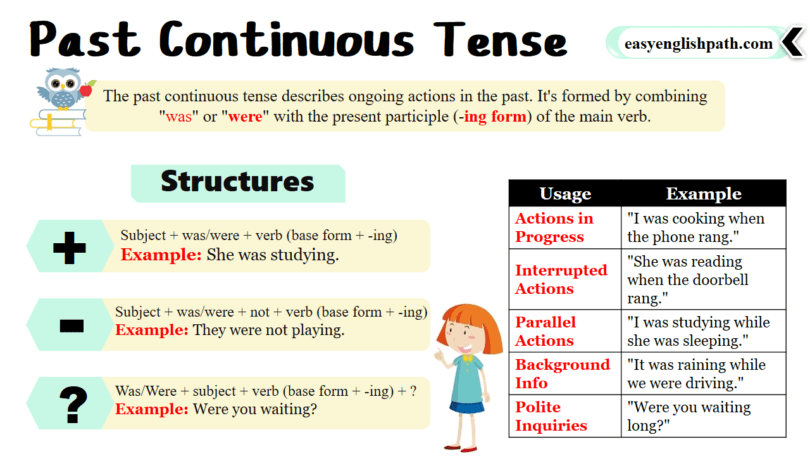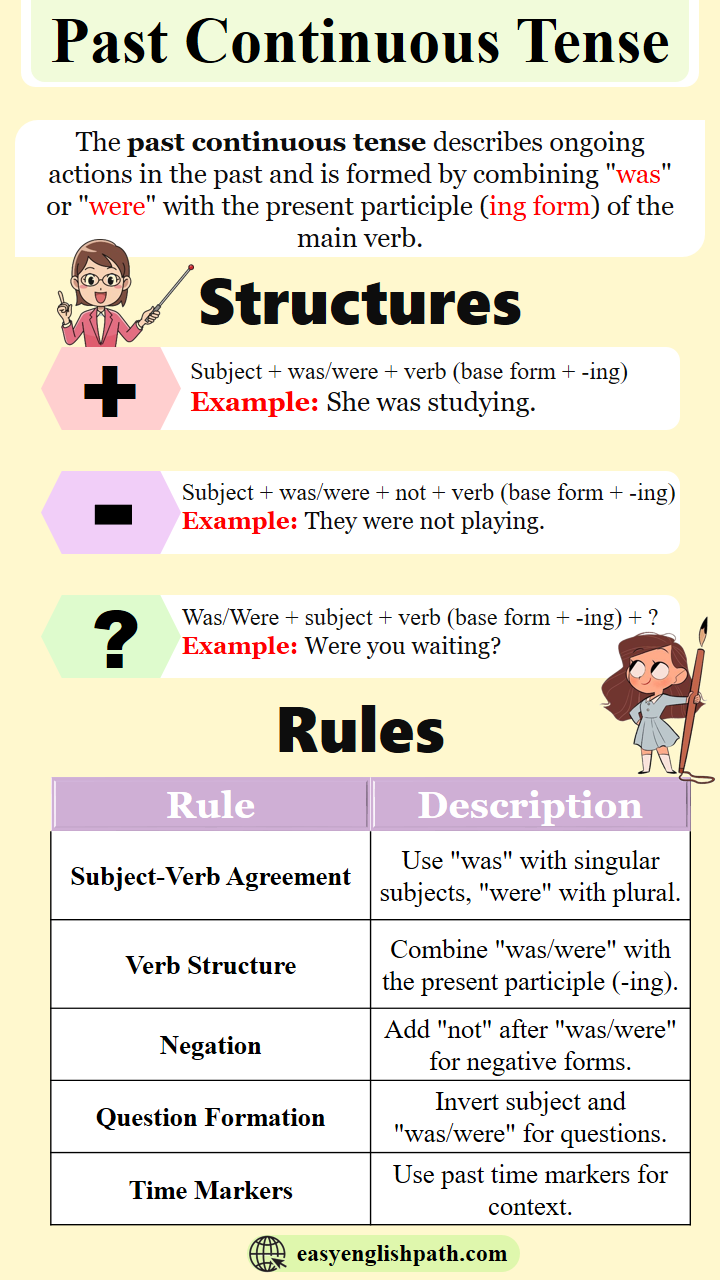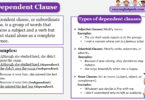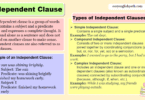The Past Continuous Tense is used to talk about things that were happening in the past. You can use it by adding was or were before a word that ends with -ing. It helps us to describe actions that were ongoing or in progress at a specific point in the past. This tense is used to show what was going on at a certain time. It’s useful for giving background information about past events.
What is Past Continuous Tense?
The Past Continuous Tense is used to describe actions that were ongoing or in progress at a specific point in the past. This tense is also used to provide context for past events, set the scene for narratives, or help convey the idea that an action was happening continuously or repeatedly in the past.
- She was eating dinner when the phone rang.
- He was running in the park while it was raining.
- They were talking about their vacation plans.
- We were playing board games at Grandma’s house.
Different Uses of Past Continuous Tense
Ongoing Action in the Past:
-
- I was studying when the power went out.
- They were playing football when it started to rain.
- She was cooking dinner while her husband was setting the table.
Two Ongoing Actions Happening at the same time in the Past:
-
- While Sarah was reading a book, Tom was watching TV.
- They were talking on the phone while I was doing my homework.
- The children were playing in the garden while their parents were having a barbecue.
Interrupted Action in the Past:
-
- She was sleeping when her phone rang.
- I was walking to work when I saw an old friend.
- They were having a picnic when it suddenly started thundering.
How Can Past Continuous Tense Be Formed?
| [Subject] + [was/were] + [present participle (-ing form of the verb)] |
This is formed by using the past tense of the verb “to be” (was/were) followed by the present participle (-ing form) of the main verb.
- I was playing.
- She was sleeping.
- They were cooking.
| [Subject] + [was/were] + [not] + [present participle] |
When it comes to negative sentences, “not” is added after “was” or “were” to form contractions such as “was not” (wasn’t) or “were not” (weren’t).
- I wasn’t studying.
- He wasn’t watching TV.
- They weren’t dancing.
| [Was/Were] + [subject] + [present participle]? |
In the form of the question, the subject and “was” or “were” are placed at the beginning.
- Was he sleeping?
- Were they working?
- Were you eating?
Past Continuous Tense Examples:
- The cat was sleeping.
- The cat wasn’t sleeping.
- Were they playing outside?
- She was singing a song.
- He wasn’t cooking dinner.
- Was he cooking dinner?
- It was snowing heavily.
- Was it snowing heavily?
You May Also Like this
- Simple Past Tense with Examples
- Simple Present Tense In Grammar
- Present Continuous Tense with Usage
- Present Perfect Continuous Formation






